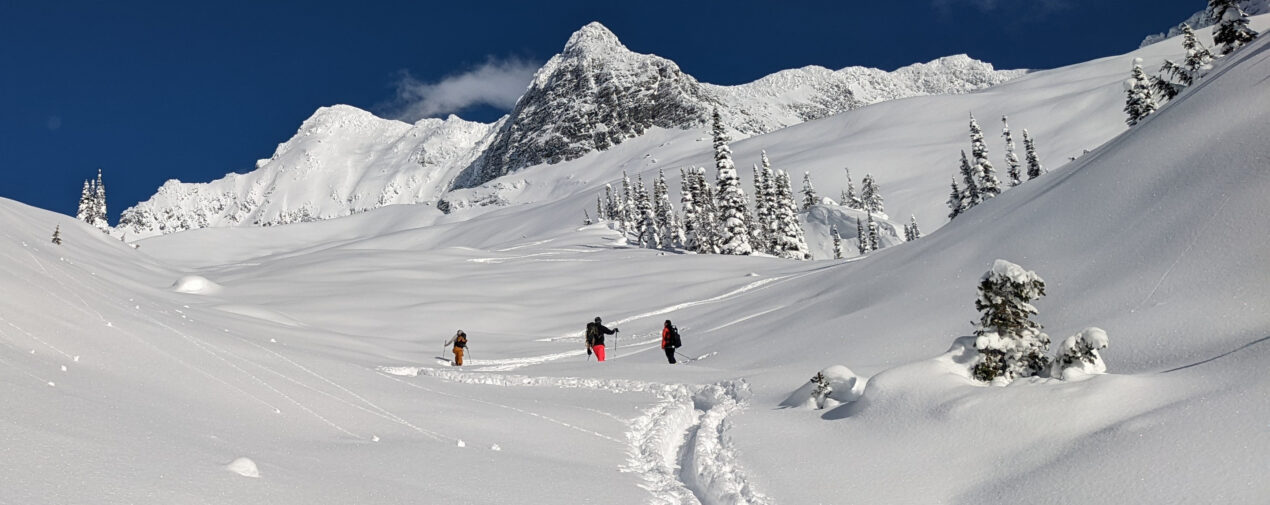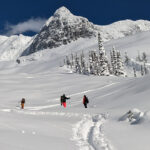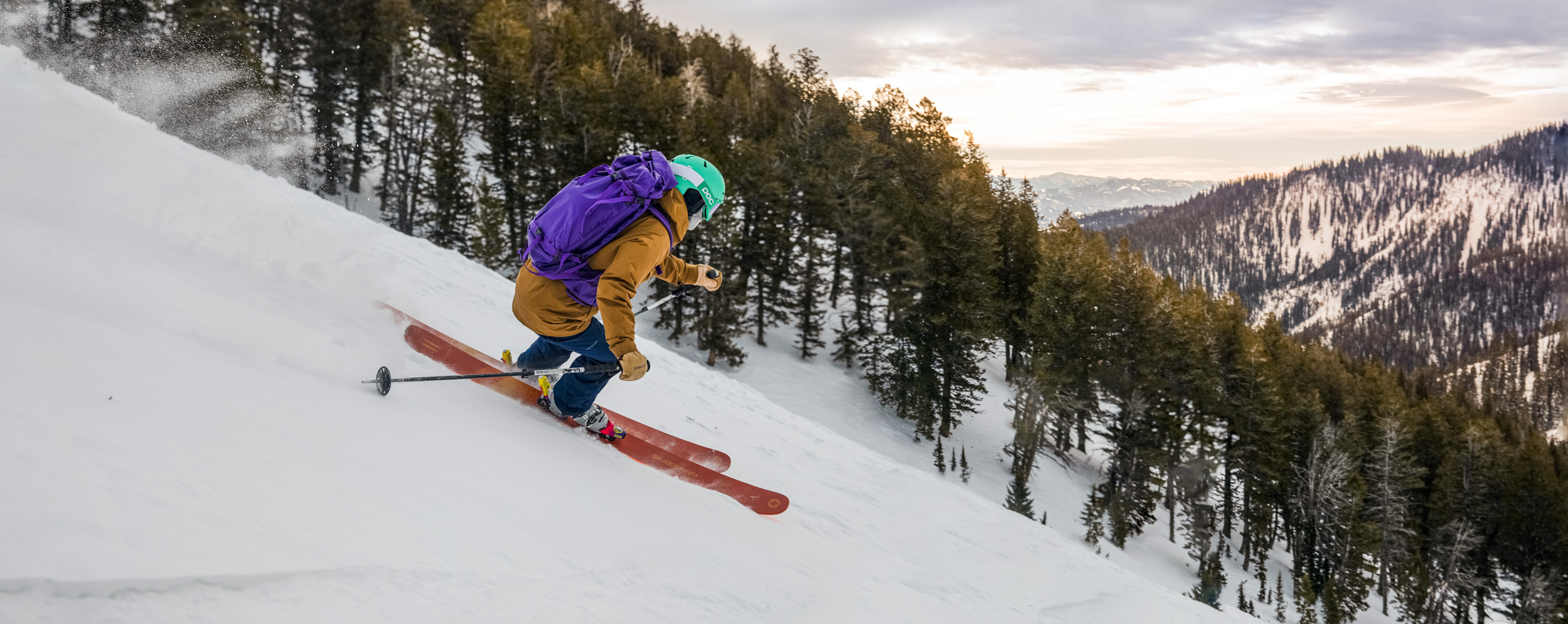Why Backcountry? Two Questions to Ask Yourself When You Start Ski Touring or Splitboarding
Last season, we dug into what it means to be a woman in the backcountry with a four-part series targeting our representation, education, presence, and future. (Check out each installment here: 1, 2, 3, + 4) But before we can think about what it means to be “out there,” let’s return to a question we should ask first: why do we want to get into backcountry skiing in the first place?
For some of us, ski touring and splitboarding are a natural progression from years spent at resorts. For others, backcountry skiing is about saving money on an expensive resort pass. Maybe fitness or endurance are the name of your game. Or maybe you’re just out there for the views and friendship.
Regardless of why you want to get into winter backcountry recreation, let’s build a mental map that focuses on the why and how of backcountry travel versus the what. Traditional adventure travel and tourism narratives tell us that certain physical strength-based and objective-driven adventures bestow value. But nearly a decade of splitboarding and my entire career as an advocate and storyteller have shown me otherwise. Instead, pinning “success” for a day out touring on just one single goal like, “Did we ski that line” …
By focusing on the why and how of backcountry travel, it’s easier to see and feel integrated with the natural environment—rather than the oppressive feeling of colonialist domination of circumstances and environment that can so easily hurt our mind, hearts, friendships, and bodies.
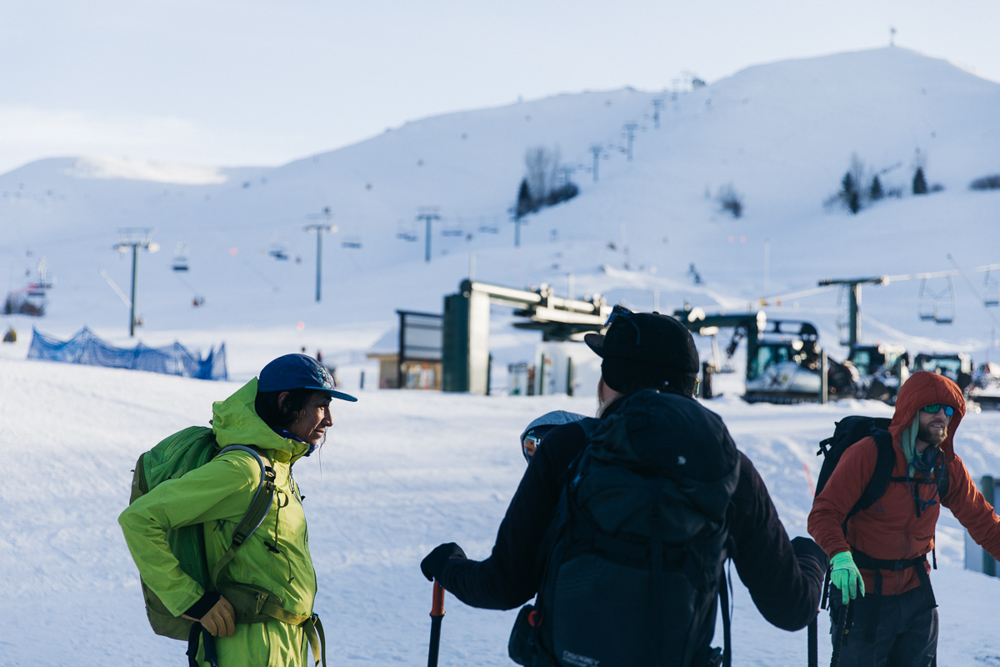
Will going into the backcountry offer you opportunities to connect, heal, or grow?
Frame your approach to exploring the backcountry through one of these three lenses: connect, heal, grow, and you’ll set yourselves up for a healthy mindset each time you head outside—particularly because each approach offers a completely different set of complications and rewards.
Backcountry skiing to connect involves building relationships, whether with yourself, friends around you, or the more-than-human kin that populate the landscape you’ll move through. Connection is about sensing, observing, listening, and co-creating. Shifting one’s focus to a connection-driven outing often leaves you with “my cup is overflowing” feelings, regardless of the type of skiing you do. When conditions are poor or challenging, a focus on connection allows extra opportunities to take field observations. This can help build knowledge of how weather, recent snowfall, and landscape features like rocks or trees affect the snowpack, which is extremely important knowledge to stay safe and prepared in the backcountry
I know I’m not the only one that needs to go outside to heal sometimes. Whether we realize it or not, NatureRx is a thing: being outside recharges our batteries, often in the most unexpected ways. A different version of a connection-driven day, a healing outing, can be about directly moving through a metaphorical and physical landscape to process emotions and situations.

Even though you’ll have different plans on hand for the conditions that you find (i.e. Plan A, Plan B, or Plan C), you might have family, work, or relationship worries in the back of your mind. Maybe you’re working through some big (or small!) plans for your future. Regardless, if nagging distractions pull your mind away from the events planned for the day, you’ll know you’re on a healing adventure. Give yourself permission to have this conversation internally and with friends: “I’m really working on X today, in addition to being present.” A day you set aside for healing is always good for the heart and soul.
Reminder: When you give yourself permission to heal, or address an issue that you can’t get off your mind, you set yourself up for a better mindset for the day. When we ignore events that affect our emotional state, we can make decisions that in turn become dangerous—often because we feel pressured to please others around us. Take up space: adventure can be a time for restoral as much as getting rad!
Nature is a beautiful place to prove your competence: from basic survival skills to niche technical skills that come with backcountry skiing (i.e. skiing steep couloirs, building a snow shelter, or skiing through tight trees on variable terrain), the mountains share a complex environment of which we immediately become a part of once we enter them.
RELATED: Learn more about goal-setting in the backcountry (and beyond) here.
Yet objective-driven achievement—i.e. skiing just one specific line—means that often you’re going bigger, faster, or harder than anyone involved is completely ready for (unless, of course, you and your touring partners have tons of experience under your belt, and are ready to send it when the conditions are right). When you’re heading out for a day to prove yourself, be sure to check in early and often with yourself and partners: is the objective right for the day? Are conditions lining up? Do you have all the necessary gear (download this checklist from @cywhitling on NewSchoolers)?
Consider: Objective-driven skiing is tied to ego-driven culture. Ego can be our own worst enemy when it blocks perception of what’s happening in the world around us: pay attention to other parties, avalanche hazards, and changing weather conditions when getting after an objective. El ego no es tu amigo!
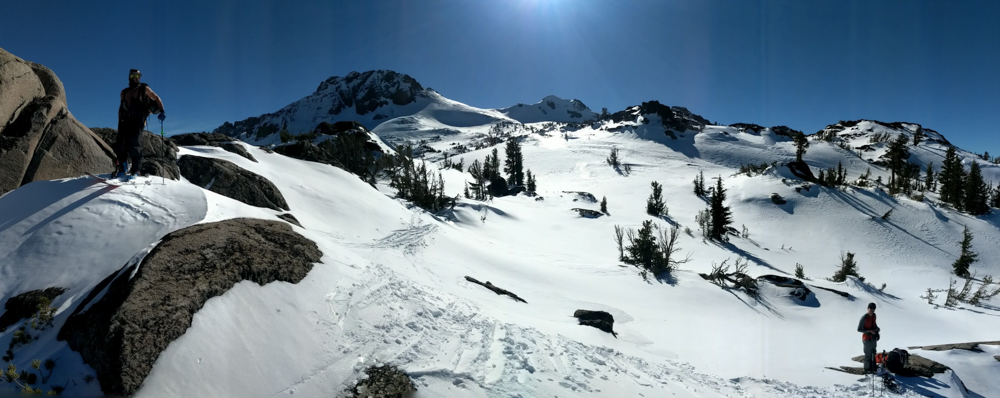
What have you learned about the stories of the land and the ethics of the local community?
Learning the stories of the land takes time, effort, and dedication. The ethics of the local community can be equally complex and nuanced. But starting is easier than you might think: the pursuit of both adventures starts the moment you decide to set foot on a trailhead.
For every adventure we take, advance planning time helps us prepare for what lies ahead. Often, this takes the form of researching via guidebooks or apps like OnX Backcountry, Gaia GPS, or CalTopo. It probably includes more than a few text messages to your ski partners. And undoubtedly, it includes packing snacks.
But have you considered learning whose land you’re on? Or how you’ll share space with the people that live and travel in the places you’re adventuring?
First, check out Native Land (available as both a mobile app and via their website). You can also turn on a Native Lands layer via Gaia GPS (see screenshot below, and see this how-to from Gaia). If you have an extra second, read the informational kiosks at trailheads. And if you get the opportunity to take a couple of hours out of your day, visit exhibitions celebration Indigenous heritage sites: for example, the Ute Indian Museum in Montrose, Colorado (gateway to Silverton, Telluride, and Crested Butte) is an amazing and unforgettable experience for anyone willing to spend $6 and two hours learning about the history of Colorado and Utah.

Second, consider how you’ll share the stories of your adventures with the world through social media and beyond. Know that geotagging is a nuanced topic: when communities have the infrastructure for growth (roads, trailheads, waste disposal, bathrooms, etc.), thoughtfully tagging a location can be a welcome way to share information.
Locations with little-to-no infrastructure or ability to support increased human impact can suffer greatly when we don’t thoughtfully geotag. Notorious examples include Horseshoe Bend in Arizona or Hanging Lake in Colorado.
And in some locations, like cultural and ancestral sites linked to Indigenous communities, tagging is a big No-No: “by treading softly and leaving things as we find them, we show respect for those who came before us and those who will visit after us” says Friends of Cedar Mesa, hosts of the Bears Ears Education Center in Bluff, UT, and co-creators of the Visit With Respect guidelines. The Friends remind us: “Cultural sites are sacred to Indigenous peoples and integral to American history….and GPS often reveals too much, leading uneducated visitors to sensitive sites.” They advise: “When posting online about your trip, remove all references to location.”
RELATED: Read more about the Visit With Respect guidelines here.
Remember: we all have the ability to influence our friends and neighbors with what we share. Exercise your responsibility wisely.
More of a video person? Check out this chat with Vasu Sojitra and Connor Ryan for Winter Wildlands Alliance’s 2021 Grassroots Advocacy Conference on : “Responsible Influence: Creating an Ethic of Inclusion and Conservation through Social Media.”
When you’re learning stories of the land and the community you’re visiting, there’s really just one rule: be communally minded. If you wouldn’t want people to do it in your backyard, don’t do it in someone else’s.
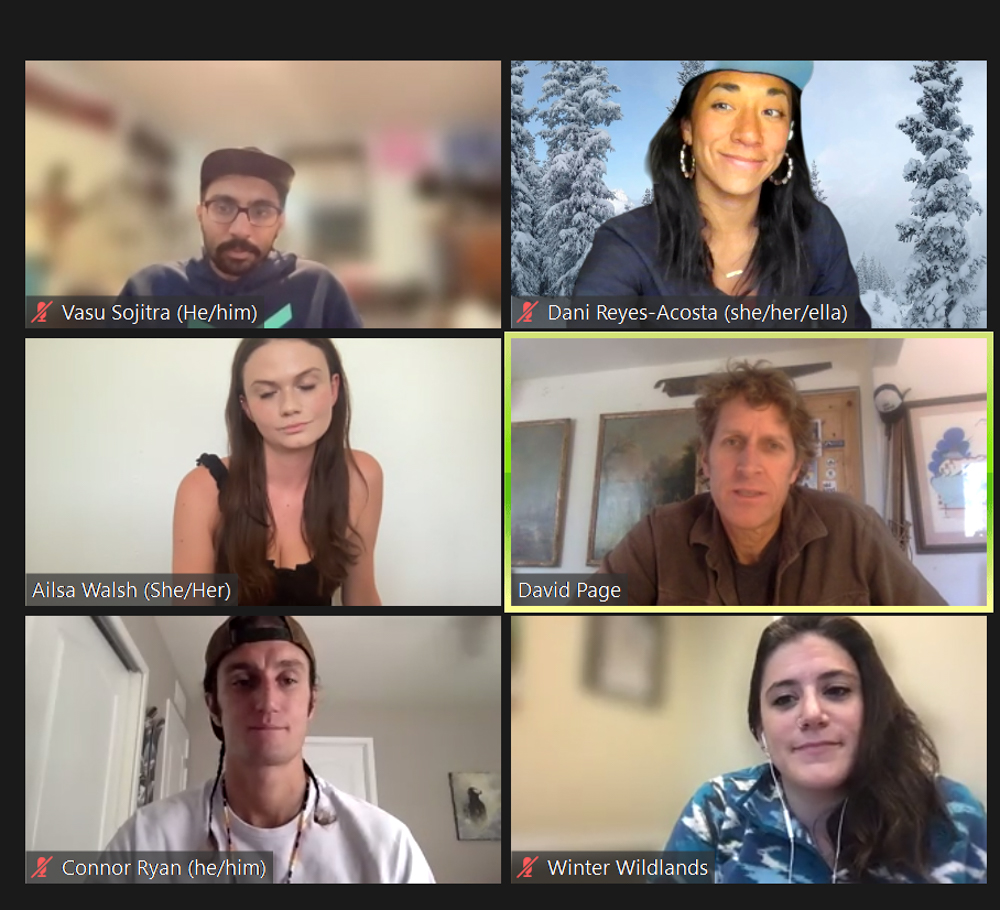
Heading into the backcountry can be a gratifying, joyous, and growth-filled experience. Remind yourself that not all your touring partners may have reflected on the approach I’ve shared with you here—remember: dominant narratives of the established ski industry inform how we view the world. But your journey is your own, and I want to encourage you to cultivate a healthy right mindset and community. Be patient: you’ll be on the path to personal discovery and outdoor joy in no time.
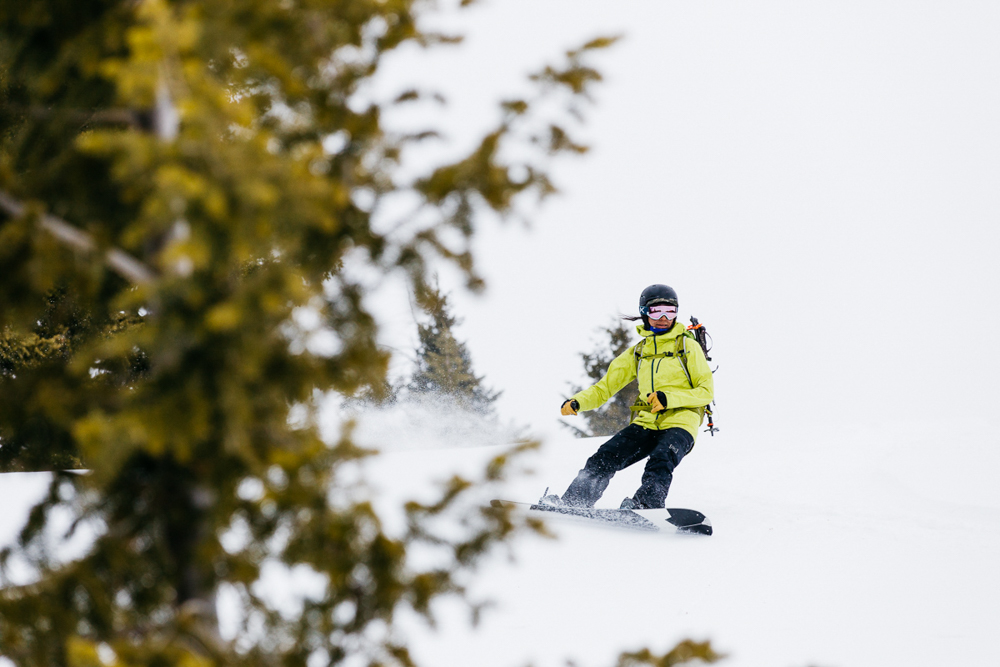
Read Dani’s full series on women in the backcountry:
Women in the Backcountry, Part 1: Why Do Women-Only Spaces Matter?
Women in the Backcountry, Part 2: Avalanche Education and Building Competency
Women in the Backcountry, Part 3: Women’s Mentorship in the Mountains
Women in the Backcountry, Part 4: The Future of Women in the Backcountry
About the Gear Tester
Athlete and storyteller Dani Reyes-Acosta aims to inspire individual action and collective communion through self-care and self-determination found in the outdoors. After leaving cushy corporate life to find her way back to her roots, she ticked rock climbs and ski lines across Argentina, Chile, Canada, and the USA on a circuitous path to self-actualization. Find her online as @NotLostJustDiscovering or via DaniReyesAcosta.com

